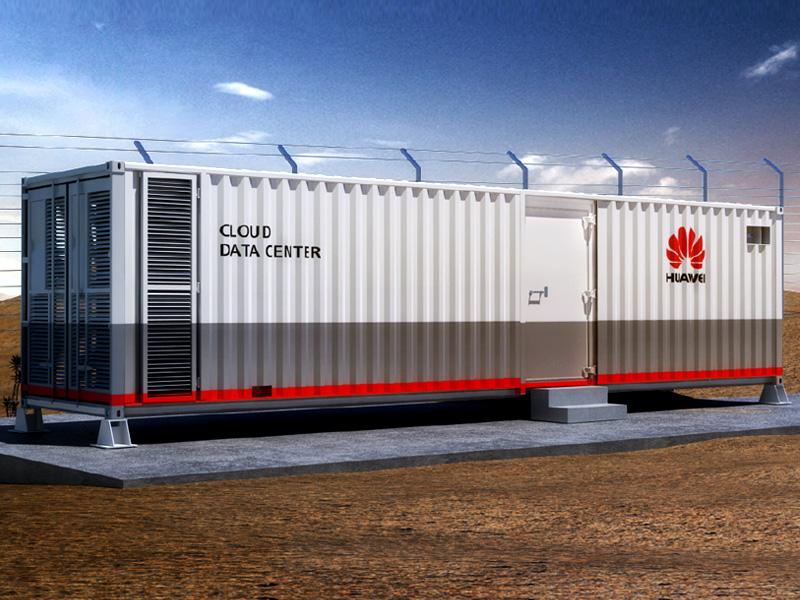Huawei Builds 100G SDN Campus Network for KMITL of Thailand
Produkty, Rozwiązania i usługi dla przedsiębiorstw
The King Mongkut’s Institute of Technology Ladkrabang (KMITL) is a major science and technology university in Thailand and has the strongest ICT capability among the country’s universities. Located in Bangkok, the university is considered the most prestigious for technical undergraduates and offers a curriculum that includes machinery, electronic engineering, architecture, control, management, communication, medicine, and liberal arts.

KMITL’s computer center has kept abreast of ICT developments and put together an advanced plan for its campus network. They aimed to build a high-performance, SDN-based campus network integrating various education functions.
Responsible for network construction and O&M, the KMITL computer center specified requirements on computing nodes, block storage nodes, and object storage nodes. The computer center wanted the computing nodes to be open and the solution to support OpenStack. However, they were concerned that the OpenStack versions of different vendors are isolated and would not support open source principles. Further, KMITL’s technical team required distributed block storage equipped with the open source distributed storage software Ceph, because block storage was mainly used for storing Virtual Machine (VM) data. They also recommended connecting block storage to a gateway to provide object storage.
Whatever the architecture, KMITL needed a compact solution that would fit the limited space available. Renovating the existing equipment room would be a challenge, and building a new equipment room would take a significant amount of labor and time.
Huawei analyzed KMITL’s requirements and offered a solution that was more cost-effective than KMITL had envisioned. Huawei deployed the company’s FusionStorage system to support VM data storage requirements and OceanStor 9000 distributed NAS systems for storing files. This solution was easy to deploy because the NFS/CIFS protocols are supported without the need for a gateway. By using NVMe SSDs as the cache, FusionStorage hybrid storage can provide performance several times higher than AFAs running Ceph. The OceanStor 9000 implements distributed RAID, which can improve the efficiency and security of resource information service compared to the triple-write redundancy of Ceph, in addition to the better scalability and easier cost control enabled by the OceanStor 9000.
Because servers are deployed in multiple locations on campus, KMITL preferred a location-independent virtual network. Huawei also suggested the automation of network configuration, helping KMITL improve efficiency over its use of self-service network implementation. In addition, KMITL required that in-depth security checks be performed and traffic be directed to a security resource pool to ensure access security of the virtual network.
Huawei’s solution meets KMITL’s requirements with software-defined agile switches that support development of customized solutions. The solution uses a vendor-independent open platform and supports various storage services, reducing the required investment. In addition, the solution supports unified and heterogeneous management to reduce O&M costs.
Today, KMITL’s network comprises the new campus network, data center network, and R&D network. In the organizational structure of the campus network, networks of the different organizations are interconnected or isolated based on service requirements. In the network service model, each virtual network forms an independent security domain based on the KMITL NG Campus, which is the unified physical carrier network. The virtual networks are isolated from each other, and security control is implemented by the security group inside the virtual networks.
In the virtual campus network architecture, KMITL has an SDN-based virtual campus network and used the VXLAN network architecture to co-deploy both the campus network and the DC, and to provide virtual campus network services. The campus network provides the university’s staff and students with 100G non-blocking forwarding, as well as the improved user experience brought by in-depth wired and wireless convergence. In addition, the layer-by-layer security isolation from the virtual network to the firewall and then to the security group ensures network security.
To enable KMITL to overcome its equipment room limits, Huawei provided a container-based data center. Its advantages include a small footprint and easy deployment. The container houses all necessary facilities, including the power supply, cooling system, cabinets, cable layout, fire suppression, lightning protection. The container-based data center solution can meet the education data computing requirements of the university without changes to the environment. Huawei’s Prefabricated All-in-One Data Center solution perfectly matches KMITL’s requirement.

Through KMITL and Huawei’s joint efforts, the campus network solution brought the following benefits to KMITL:
KMITL’s above-100G SDN campus network sets a benchmark for IT system construction for other universities and provides a showcase of high-end 100G SDN and cloud data center for the education industry — not just in Thailand, but also around the world.